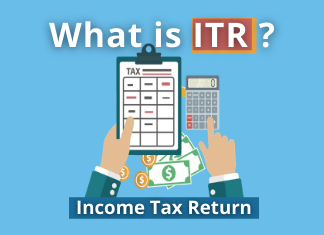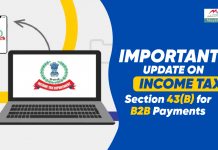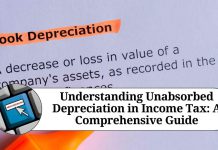Article Content
- What Is ITR (Income Tax Return)?
- How Many Types of ITR?
- How to File ITR Online?
- Which ITR Form Should I File?
Overview
ITR or Income Tax returns are the most confusing and dreaded topic even for regular taxpayers. Many don’t even file fr their ITR only because they don’t want to deal with whole other paperwork. Some just don’t do it, they think they have paid their taxes on time and their duty is done.
What you don’t understand is filing the ITR in Indian taxes is also the way of government assessment and many new policies are made considering the number of Income Tax Returns have filed every year. The income-tax department improves their working model on the number of ITR’s filed.
Well, the introduction of technology has made taxing easier and relax. Now, you can E-file taxes in India. Online E-filing taxes is the easiest way to E-file ITR. In this article, you will read all about the ITR, different types of ITR and you will learn how to file ITR, and which ITR should you file.
What Is ITR (Income Tax Return)?
An ITR is a form supposed to submit by all taxpayers. It contains the taxpayer’s yearly income and the tax paid by the taxpayer such as TDS and TCS all around the same financial year. The income tax department has set the dates of submission of the ITR form in advance and the taxpayer must submit their form on or before the due date.
If a taxpayer submits the form after the due date they will not be able to get the amount back for the excess tax paid over the financial year. This excess tax does not carry forward to next year which means you will lose your hard-earned money. There are mainly 7 types of ITR forms available for each taxpayer such as individuals, HUF, Pvt or LTD company, etc.
The income tax department urges all taxpayers to e-filing taxes in India and returns. Taxpayers can select the ITR form based on the type of taxpayer, Income slabs, and so on. Before e-filing, one must calculate their total earnings, tax paid, and tax payable. If you have carried forward your losses and set off of brought forward losses then it could impact your whole earnings and thus you must file for Income Tax Returns.
You also need to check the form 26AS and Form 16 to know about the TDS and other sources of income such as interest on FD and you should also check your salary and tax-saving investments respectively. This will help you to calculate your correct income and Tax paid to determine your ITR validation. If you are not eligible and you still file ITR then you would have to pay the penalty set by the Income Tax Department.
How Many Types of ITR?
According to the Income-tax department, there are 7 types of ITR form which you can e-file from the comfort of your home or from anywhere. It is the fastest way to e-file your income tax return 24/7 before the due date. There is no limitation on time and areas.
The purpose of every ITR form is different and every ITR form Is meant for a specific category of taxpayer. Therefore, we are giving you a brief description of every Form and who is applicable to submit which form. The details of the easiest way to e-file income tax returns are below:
Form ITR-1 or SAHAJ
ITR-1 form applies to the residents of India with an Income slab up to Rs.50 lakh. Any individual whose income source is from a salary or rent from the residential property is eligible to file an ITR-1 form. Except their total earnings in a financial year do not exceed the total limit of Rs. 50, lakh. Salaried individuals can also submit Form 16 for e-filing taxes in India.
Form ITR-2
Form ITR-2 applies to the individuals and HUF ( Hindu Undivided Family) for their annual earnings except for the income from business or profession. Both residents and non-residents of India can file the ITR-2 form for the income generated from salary, rent from residential property, capital gains, etc. Salaried individuals who invest in equity shares are also eligible to file the ITR-2 form for their gains and losses. Only the taxpayers with income above Rs. 50 lakh are supposed to file this form.
Form ITR-3
ITR-3 form is applicable for those individuals who can’t file the ITR-1 and ITR-2 form. All the individuals who generate their income from business or profession are eligible to file the ITR-3 form. Salaried individuals who also generate income from intraday trading or might earn in the future from shares also need to file this form. All the individuals need to report all their income source such as salary, rent from housing property, capital gains, business, and profession must file the ITR-3 Form.
Form ITR-4 or SUGAM
ITR-4 form is applicable for individuals, HUF, and Partnership firms whose income is over Rs.2 crore annually. They are supposed to file an ITR-4 form under the Presumptive scheme of taxation. All these taxpayers must be taxed under section 44AD. ITR -4 form is also applicable to individuals whose income from the profession is up to Rs.50 lakh. Even a freelancer with a notified profession is also supposed to file the ITR-4 form for the Income Tax Return.
Form ITR-5
All the business entities such as Partnership firms, LLP, AOP, and BOI are supposed to file their income tax return under this form. All these taxpayers need to report their source of income and income generated in the financial year from business and profession or from any other source need to e-file the ITR-5 form.
Form ITR-6
ITR-6 Form applies to all the companies who are not claiming exemption on their income under section 11 of the Income Tax Act, 1961. All the companies that do not generate income from religious or charitable property can e-file the Income-tax return under the ITR-6 form.
Form ITR-7
Form ITR-7 applies to the companies who generate income from the religious and charitable trust property and are looking for exemption under section 11 of the Income Tax Act, 1961.
How to File ITR Online?
Now, Income Tax Department has mandatory the e-filing of income tax returns. All the taxpayers need to submit their income tax forms online on or before the pre-decided date. However, there is an exception for the super senior citizens aged above 80 years.
One can visit the Income Tax portal www.incometaxindiaefiling.gov.in. and login by using their PAN card, password, and captcha code on the screen. You will be able to see all the Income Tax Return forms. Select the ITR to form applicable to you and submit all the required information such as income generated, tax paid, tax payable, and savings for the specific financial year and submit the form. You can also see form 16, form 26AS, and from 15G/15H.
Which ITR Form Should I File?
Form16
Form 16 is a TDS certificate for salaried individuals. It contains all the TDS details of an individual deducted by the employer over the year. It has the gross salary information, HRA, and LTA. It automatically contains all the information of the net taxable salary as specified by the employer, Tax savings done over the financial year, and any other source of income or loss stated by the employee. This form is ideal for salaried people earning below Rs.50 lakh annually.
Form 26AS
Form 26 AS contains all the detailed information of the TDS or Tax Deducted at Source all around the financial year. Tax deducted from the salary, rent of housing property, income generated from the sale of immovable property is described in this form. Form 26AS also contains information like self-assessment tax, advance tax paid over the year for the mentioned financial transaction of the particular amount.
Form 15G and 15H
Form 15G and 15h are applicable for the income of the senior citizens. If you are below 60years but your income is below the basic exemption limit then you need to submit form 15G to your employer
Form 15H is supposed to submit by the senior citizen with tax due on total income is NIL. You also need to submit this form to your employer or person who is paying you income.




















